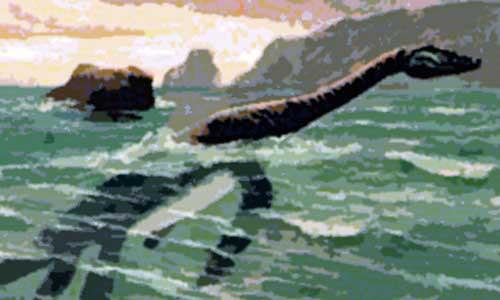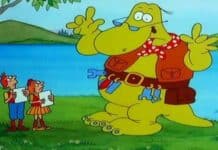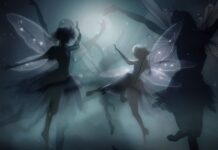TRESSA YEOMANS ponders the question: Does the Loch Ness monster exist?

The Loch Ness Monster, or Nessie as she has been affectionately named, has been a firm favourite myth and legend with people around the world for a long time, and this alleged plesiosaur is certainly been one of the most-sighted monsters in the world.
My thoughts are could a monster that big, that impressive really exist today?
Many people who have reported sighting the creature would confirm YES, as Nessie has been sighted so many times and so many reports issued that we cannot deny there must be something to the myth.
Since the Loch Ness Monster story has been around for more than 1500 years, if there is a monster it is not likely that it is the same monster seen by St Columba in the 6th Century. Or, are we to believe that not only is Nessie very big, she is very old as well, a veritable Methuselah among beasts? In short, there must be more than one monster. I’ll leave it to the zoologists to calculate how many monsters are necessary to maintain the species over the years.
My thoughts on the subject have changed many times over the years and more recently while completing research. But one thing you cannot dismiss is the amount of eyewitnesses who have come forward with firsthand accounts of seeing Nessie.
The media has printed many reports of Nessie from sonar readings, pictures videos, and stories given by witnesses who flock each year to see her.
I would love to think that Nessie is real a mystical creature still around from the dinosaurs era but many facts have been placed forward over time to claim she may in fact be a hoax.
Loch Ness Monster Facts
- The monster was first seen in the River Ness before becoming more closely associated with the loch.
- The next reference to the monster was in 1933 when Mr and Mrs Spicer reported seeing a large animal crossing the road in front of their car.
- Nessie is usually described as having a small head, long neck, broad body, four flippers and a long tail.
- The scientific name for the Loch Ness Monster is a plesiosaur, which is a type of carnivorous aquatic, usually marine, reptile.
- The Loch Ness Monster cannot be a mammal as it does not have to breathe air. If it needed to surface in order to breathe air it would most probably have been seen by many before now.
- Nessie is the most famous cryptid in the world. The word ‘cryptid’ is used in cryptozoology and refers to a hidden creature or living creature which might exist. This should not be confused with unreal or mythical creatures. For a beast to qualify as a cyrptid there needs to be some form of evidence of existence. This can mean being mentioned in folklore or that there have been ‘sightings’.
Loch Ness Monster Photograph?
- The most famous photograph of the monster was taken in 1934 near Invermoriston by Dr Robert Kenneth Wilson from London. It shows a head and long neck rising out of the water, the only picture to do so, and was published in the Daily Mail. Dr Wilson refused to allow his name to be associated with the photo so it became known as the “surgeon’s photograph”. In fact some 60 years later it was revealed to be a hoax.
- Another famous hoax occurred in December 1933 when big-game hunter, Marmaduke Wetherall, was hired by the Daily Mail to find the monster. Finding the task harder than he had anticipated, Wetherall was delighted when he soon found a series of enormous footprints. Casts of the prints were sent to the Natural History Museum in London but were found to have been made by an ornamental hippopotamus foot. Wetherall’s find was obviously discredited but what is not clear is whether he actually planted the prints himself or was taken in by some other hoaxer.
- In 1959 an Italian journalist claimed he had invented Nessie in 1933. Francesco Gasprini was the London correspondent of a Milan newspaper and found himself a little short of news. He read a couple of lines in a Scottish paper about two fishermen finding a strange fish and exaggerated it into a monster. He claims he also invented some eye-witness accounts and had drawings and photographs published. Gasprini planned to then kill off the monster, or to have it escape from the loch, but the press ran away with the story and the rest, as they say, is history.
So my question to you is:
Do you believe in the Loch Ness Monster? Do you believe this magnificent creature is real?
Whatever you believe, Nessie will remain Britain’s most discussed mythical beast of all time.
TRESSA YEOMANS is the director/founder of Rugeley Supernatural Society, based in Staffordshire. You can visit the R.S.S. website at www.rugeleysupernatural.co.uk










[…] chances of the Loch Ness Monster being a plesiosaur are nil. It would be more likely to be Elvis in a rubber monster suit! […]